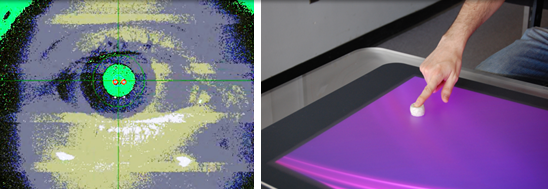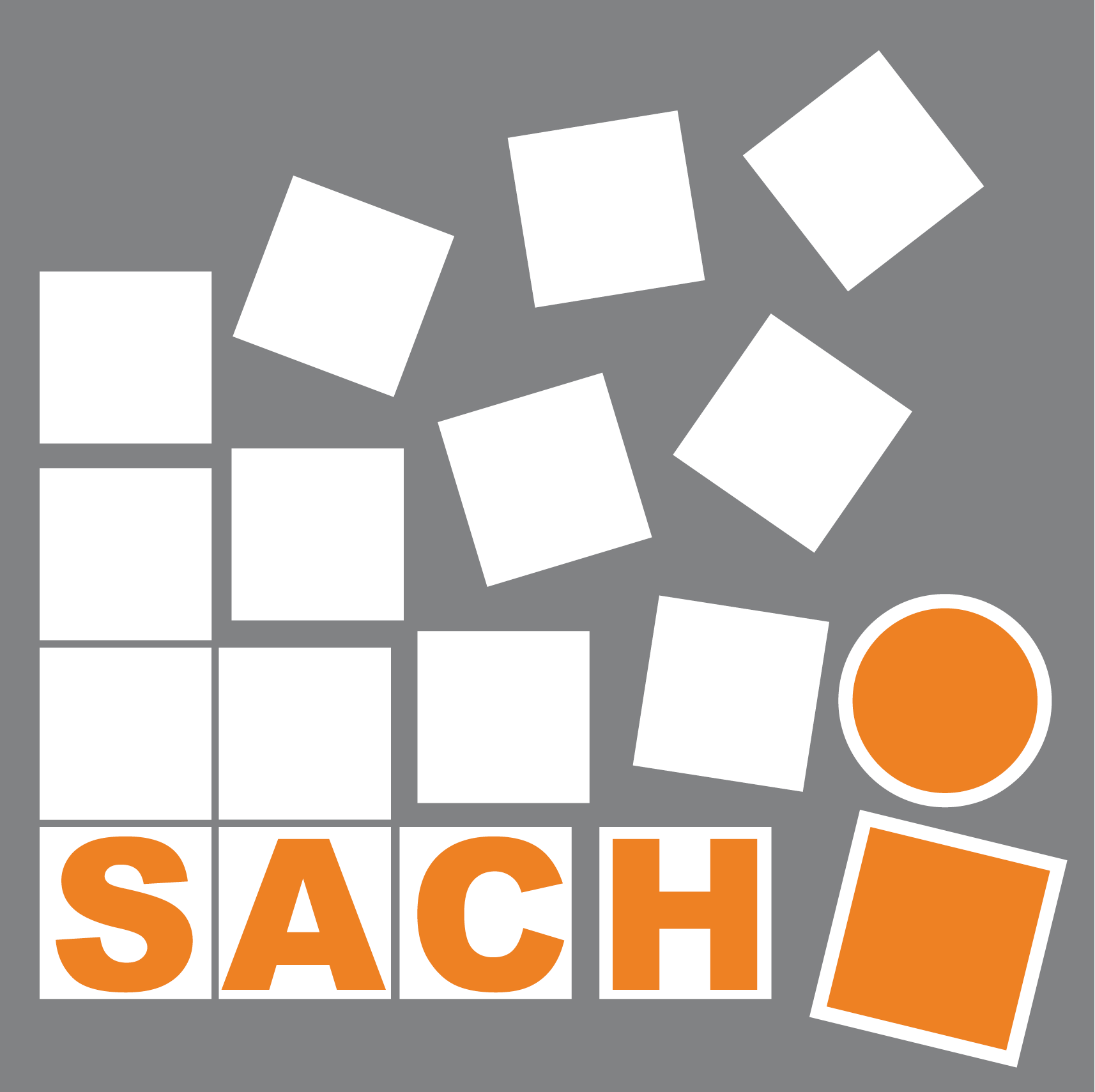<!–Speaker: Annalu Waller, University of Dundee
Date/Time: 1-2pm February 21st, 2012
Location: 1.33a Jack Cole, University of St Andrews (directions)–>
Abstract:
Augmentative and alternative communication (AAC) attempts to augment natural speech, or to provide alternative ways to communicate for people with limited or no speech. Technology has played an increasing role in AAC. At the most simplest level, people with complex communication needs (CCN) can cause a prestored message to be spoken by activating a single switch. At the most sophisticated level, literate users can generate novel text. Although some individuals with CCN become effective communicators, most do not – they tend to be passive communicators, responding mainly to questions or prompts at a one or two word level. Conversational skills such as initiation, elaboration and story telling are seldom observed.
One reason for the reduced levels of communicative ability is that AAC technology provides the user with a purely physical link to speech output. The user is required to have sufficient language abilities and physical stamina to translate what they want to say into the code sequence of operations needed to produce the desired output. Instead of placing all the cognitive load on the user, AAC devices can be designed to support the cognitive and language needs of individuals with CCN, taking into account the need to scaffold communication as children develop into adulthood. A range of research projects, including systems to support personal narrative and language play, will be used to illustrate the application of Human Computer Interaction (HCI) and Natural Language Generation (NLG) in the design and implementation of electronic AAC devices.
About Annalu:
Dr Annalu Waller is a Senior Lecturer in the School of Computing at the University of Dundee. She has worked in the field of Augmentative and Alternate Communication (AAC) since 1985, designing communication systems for and with nonspeaking individuals. She established the first AAC assessment and training centre in South Africa in 1987 before coming to Dundee in 1989. Her PhD developed narrative technology support for adults with acquired dysphasia following stroke. Her primary research areas are human computer interaction, natural language generation, personal narrative and assistive technology. In particular, she focuses on empowering end users, including disabled adults and children, by involving them in the design and use of technology. She manages a number of interdisciplinary research projects with industry and practitioners from rehabilitation engineering, special education, speech and language therapy, nursing and dentistry. She is on the editorial boards of several academic journals and sits on the boards of a number of national and international organisations representing disabled people.
News
A new paper from SACHI in collaboration with the Interactions Lab (The HapticTouch Toolkit: Enabling Exploration of Haptic Interactions) will be presented at this year’s TEI conference (#tei2012, www.tei-conf.org/12/). The paper describes work on an API to facilitate the fast programming of haptic tabletop application prototypes.
 As part of the launch of the Trading Consequences project site Aaron has written the first blog post in which he says that the question is key in this project. “To understand the consequences of our trading history, historians need to ask difficult, subtle, multifaceted and challenging questions. Questions which aren’t polluted by knowledge of the limitations of the methods and technologies we have today. These insightful questions won’t come from a focus on what the tools of today can support, what the analysis or visualisation methods can do or what data is available. ” see the full blog post here.
As part of the launch of the Trading Consequences project site Aaron has written the first blog post in which he says that the question is key in this project. “To understand the consequences of our trading history, historians need to ask difficult, subtle, multifaceted and challenging questions. Questions which aren’t polluted by knowledge of the limitations of the methods and technologies we have today. These insightful questions won’t come from a focus on what the tools of today can support, what the analysis or visualisation methods can do or what data is available. ” see the full blog post here.
<!–Speaker: Ken Scott-Brown, University of Abertay Dundee
Date/Time: 1-2pm February 7th, 2012
Location: 1.33a Jack Cole, University of St Andrews (directions)–>
Abstract:
In this talk I review examples from industry engagement activity that have taken well known theory in cognitive science and used them to address common HCI problems by forming new questions that have in turn lead to interface development. In the first part of the talk I discuss how a multi-disciplinary team including input from computer arts, computer games programming, engineering and psychology developed a multi-touch application to visualise financial planning targets on a Microsoft Surface. In the second part of the talk I will discuss how assistive agents displaying deictic gaze cuing have been implemented and evaluated using touch screen displays and eye-movement recording equipment. Both examples demonstrate how a practice-based approach to animation and an appreciation of vision science contribute to the understanding and development of intuitive interface design and implementation. The critical feature is the development of authentic animation conforming to the artistic principles of animation and the biological limits of the human visual system.
Bio:
Ken Scott-Brown is a lecturer at the Centre for Psychology at Abertay. After completing his Honours Degree and PhD in Psychology here at St Andrews he then undertook post-doc research posts at Glasgow Caledonian University, St Andrews, and Nottingham before taking on his current role. He is a currently Principal Investigator on a series of industry and public sector funded grants; and a collaborator on several more cross-discipline research projects. The projects are linked by the theme of data visualisation and interaction using a blend of approaches informed by Cognitive Science and exploiting technologies and skills from the Computer Games Industry.
Aaron Quigley will be delivering a week long summer school on information visulisation of UbiComp data during the 3rd International UBI Summer School in Oulu, Finland on May 28 – June 2 2012. You can see full details of this summer school here.
“The summer school provides young researchers with an opportunity to gain hands on experience and insight on selected topics on the multidisciplinary fields of ubiquitous computing and urban informatics under the tutelage of distinguished experts. The summer school is targeted primarily to doctoral students, but M.Sc. students and postdocs are also welcome to attend.”
The 2012 UBI Summer School comprises of four parallel workshops:
A: Information Visulisation for UbiComp Data by Professor Aaron Quigley,
University of St. Andrews, Scotland;
B: Supporting Community Through Interactive Public Displays by Dr. Keith
Cheverst, Lancaster University, UK;
C: Civic Technology: Mobility, Democracy and Civic Engagement by Professor
Eric Gordon, Emerson College, USA;
D: Urban Sensoria: Human-Centered Computing in Practice by Dr. Alejandro
(Alex) Jaimes, Yahoo! Research.
Congratulations to Miguel Nacenta and Aaron Quigley and their colleagues Alan Dix from Lancaster University and Tom Rodden from the University of Nottingham on having their PPD12 workshop accepted to the Advanced Visual Interfaces International Working Conference in Capri Italy, May 21-25, 2012.
PPD12 is a workshop on infrastructure and design challenges of coupled display visual interfaces.
Please see their PPD12 workshop website if you are interested in research on display ecosystems, distributed user interfaces, ubiquitous user interfaces and coupled displays visual interfaces in general. This workshop follows up on PPD’08 and PPD’10.
The EPSRC and the University of St Andrews, through their Strategic Partner Projects have awarded funding for an interdisciplinary program that will allow four students and several researchers from both the School of Computer Science and the School of Psychology to work on advanced perception and human-interface related projects. If you are still interested, please check this document: Further_information_PSYCSS_scholarship_0.2
 The scholarships are designed to kick start research collaboration between the two Schools and to enrich the student’s backgrounds with multidisciplinary collaboration experience.
The scholarships are designed to kick start research collaboration between the two Schools and to enrich the student’s backgrounds with multidisciplinary collaboration experience.
Research Fellow – £30,122 – £35,938 per annum
Start: As soon as possible, Fixed Term for 3 years – deadline for applications 17th February 2012
We wish to recruit a Research Fellow in Human Computer Interaction to support a number of new and ongoing research projects in Ubiquitous User Interface development. In addition we seek someone wishing to develop original research ideas and to collaborate on new projects with industry and academics across SICSA in Scotland. The post will be based in the School of Computer Science so particular expertise and background experience in programming, interface design, evaluation, mobile application development or novel user interface development would be an advantage.
For full details of the advertisement see here for more details.
Academics in SACHI are now actively recruiting PhD students. The School of Computer Science at the University of St Andrews has funding for students to undertake PhD research in any of the general research areas in the school. If you are interested in postgraduate research in the area of Human Computer Interaction then please visit our scholarship page on this site for further details and links.
<!–Speaker: Adrian Friday, University of Lancaster
Date/Time: 4-5pm January 9th, 2012
Location: 1.33a Jack Cole, University of St Andrews (directions)–>
Abstract:
Previous work in eco-feedback has focused either on new sensing technologies, or on people’s responses to specific feedback devices and other interventions placed in their homes. We attempt to take a comprehensive approach based on a large scale deployment of off the shelf sensors coupled with face to face interviews to account for both the amount of energy that specific appliances draw upon, and what occupant practices rely upon the services provided by these appliances. We performed a study in four student flats (each with 7–8 occupants) over a twenty-day period, collecting data from over two hundred sensors and conducting interviews with 11 participants. We build an account of life in the flats, and how that connects to the energy consumed. Our goal is to understand the challenges in accounting for both resources and practices at home, and what these challenges mean for the design of future feedback devices and interventions aimed at reducing energy consumption. In this talk we share results of our recent analysis and our experiences of conducting Ubicomp deployments using off the shelf sensors to study energy use.






